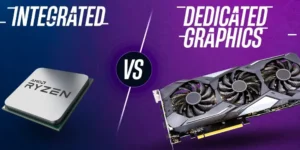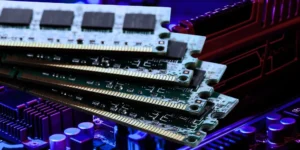Apple Inc. stands as a global icon of innovation, renowned for its groundbreaking hardware products that have redefined technology and changed how we interact with the world. Established in 1976 by Steve Jobs, Steve Wozniak, and Ronald Wayne, Apple’s journey from a garage startup to a technology giant has been marked by a relentless promise to push the boundaries of hardware design and functionality. This article delves into the remarkable evolution of Apple as a hardware company, exploring its key product lines, design philosophy, and transformative impact on the tech industry and consumer culture.
The Apple Hardware Ecosystem
Apple’s hardware offerings span various products that have revolutionized multiple industries and transformed consumer experiences.
Macintosh Computers
Apple’s entry into the hardware market began with the Macintosh, a personal computer that introduced the concept of user-friendly graphical interfaces. The early Macintosh models paved the way for modern computing, and the company’s dedication to sleek design, high performance, and intuitive user experience continues to shine in products like the MacBook Air and MacBook Pro. These laptops blend cutting-edge hardware with macOS, its robust and user-friendly operating system.
iPod and iTunes
In 2001, Apple unveiled the iPod, a device that revolutionized how we consume music. Its iconic click wheel and seamless integration with iTunes made digital music accessible and portable, laying the foundation for the modern streaming era. The iPod’s success demonstrated its ability to create hardware that appeals to tech enthusiasts and resonates with mainstream consumers.
iPhone
The launch of the iPhone in 2007 marked a seismic shift in the mobile industry. Combining a phone, iPod, and internet communicator in one device, the iPhone set new standards for smartphones. Its introduction of the App Store, touchscreens, and FaceTime transformed how we communicate, work, and entertain ourselves. The iPhone’s hardware and software integration set a new standard for the industry, inspiring countless imitators and driving innovation in mobile technology.
iPad
Apple’s iPad, introduced in 2010, created a new product category: the tablet. With its intuitive interface and versatility, the iPad has found a place in education, entertainment, and productivity. Its hardware, including the high-resolution Retina display and powerful processors, combined with the vast selection of apps, reimagined how we interact with digital content.
Apple Watch
The Apple Watch, launched in 2015, represents Apple’s foray into wearable technology. Seamlessly integrating technology into daily life, it offers health tracking, notifications, and convenient apps on a wrist-worn device. Its hardware includes advanced sensors, a customizable interface, and robust fitness capabilities, reflecting its dedication to innovation in both design and functionality.
AirPods
Apple’s AirPods disrupted the audio industry by popularizing wireless earbuds. These sleek, wireless headphones showcase the company’s ability to merge hardware with software seamlessly. With features like instant pairing, touch controls, and active noise cancellation, AirPods exemplify their commitment to enhancing user experience through innovative hardware design.
Design Philosophy
A commitment to simplicity, elegance, and user-centric innovation characterizes Apple’s hardware design philosophy. From its hardware’s minimalistic aesthetics to its emphasis on intuitive user interfaces, every product reflects meticulous attention to detail. The company’s founder, Steve Jobs, encapsulated this ethos with the mantra, “Design is not just what it looks like and feels like; design is how it works.” This approach has led to products that are not only visually appealing but also functionally superior, creating a seamless integration between hardware and software.
Transformative Impact
Apple’s impact on the hardware industry and consumer culture is nothing short of transformative.
- Innovation Leadership: Apple has consistently set new benchmarks for hardware innovation, influencing competitors and shaping consumer expectations. Revolutionary features like the App Store, Retina displays, and Face ID have pushed the boundaries of what technology can achieve.
- Elevating User Experience: Apple’s hardware’s intuitive and user-friendly design has redefined how people interact with technology. Pioneering efforts have made touchscreens, gestures, and voice assistants ubiquitous.
- Cultural Phenomenon: Apple products have become cultural symbols associated with creativity, innovation, and status. The sleek and iconic design of devices like the iPhone has made them sought-after fashion statements and functional tools.
- Ecosystem Synergy: Apple’s hardware, software, and services ecosystem creates a seamless user experience. Features like Handoff, AirDrop, and iCloud enable users to switch between devices and access their content from anywhere easily.
- Sustainability Initiatives: Their commitment to environmental responsibility is evident in their hardware design. The company prioritizes recycled materials, energy efficiency, and reduced environmental impact in its product lifecycle.
Conclusion
Apple Inc. has etched its name in history as a trailblazer in the hardware industry. From the Macintosh that revolutionized personal computing to the iPhone that redefined communication, Their hardware products have consistently shaped and propelled technological progress. Guided by a design philosophy that marries aesthetics with functionality, it has created an ecosystem of devices seamlessly integrating into users’ lives.
As Apple continues to innovate and push boundaries, its hardware will undoubtedly play a pivotal role in shaping the future of technology. It reaffirms its commitment to excellence with each new product release, transforming how we live, work, and connect with the world through groundbreaking hardware innovations. The company’s innovation and user-centric design legacy ensures that hardware will remain at the forefront of technological advancement for years.















